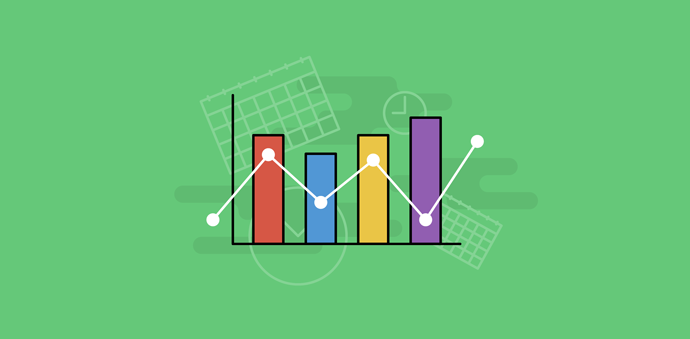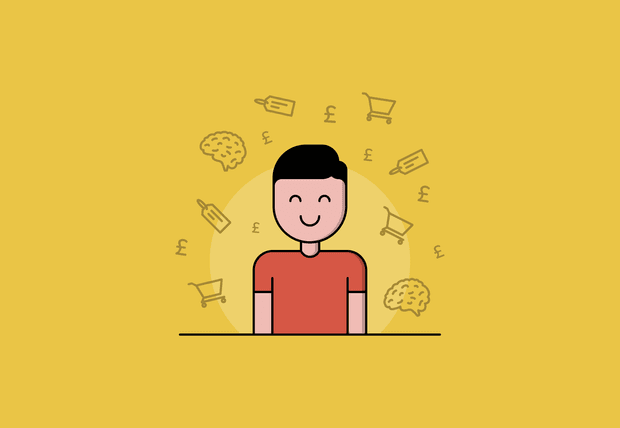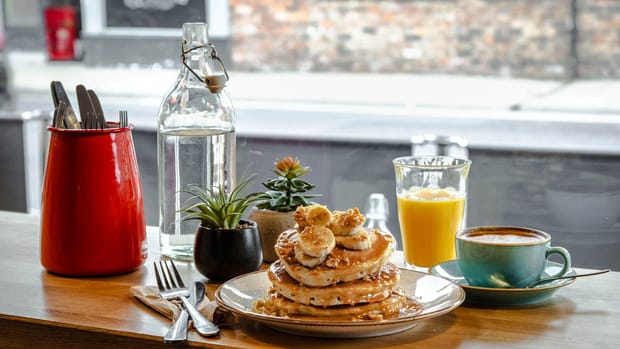Running a retail business requires you to become an expert on sales, marketing, design, customer service, and staff management all at the same time.
Pricing is just one of hundreds of areas of business that demands your attention.
With such time constraints, deciding on a pricing strategy isn't likely to be one of your priorities.
Relying on intuition to set prices can certainly get results, but by applying some tried-and-tested pricing techniques you can take the step towards truly optimised prices - and meeting your business goals.
In today's article, we explore how smaller retailers can use psychological pricing to do just that.
What is psychological pricing?
Psychological pricing is a pricing strategy based on the theory that certain prices have a psychological impact on potential buyers, affecting their buying behaviour.
Retailers can use psychological pricing to boost profitability, shift stock, or increase uptake of specific product plan.
Psychological Pricing Techniques

Warning: these psychological pricing techniques will change the way you look at pricing, forever…
Odd pricing (also known as charm pricing)
This is the oldest psychological pricing trick in the book - and a technique we all know about.
Odd pricing refers to ending prices with the digit ‘9’ instead of a round number - £1.99 instead of £2.00, for example. We’re all familiar with this approach to pricing. In fact, over 60% of advertised prices end in the digit ‘9’ [PDF].
So why does it work?
Psychologists reckon that as consumers we pay the closest attention to the opening digits of a price, and tend to ignore or downplay later digits. We read £29.99 as ‘twenty-something pounds’, even though the price is basically equal to £30. This is called 'anchoring' which we'll look into in more detail later on.
Even though we all think we aren’t susceptible to this pricing tactic, we must be - otherwise, retailers would have stopped using it years ago!
Decoy pricing
Ever noticed how so many companies offer three pricing options? That’s because of the decoy effect.
Let’s say we’re selling milkshakes in two different sizes:
Small: £1.50
Large: £4
Most people will opt for the small option because the large doesn't seem like good value.
But what if we add a third option, Medium?
Small: £1.50
Medium: £3.50
Large: £4
Suddenly, the large option seems like really good value.
Medium is a decoy option that's used to make the more expensive option appealing - it's unlikely that anyone will actually choose it.
Here’s an elegant real-world example of decoy pricing:
The Economist offers a number of subscription options to readers. Here’s how the subscription options used to stack up:
Web: $59
Print: $125
Web and print: $125
At first, it seems odd that the print option costs the same as both web and print combined. Surely the web and print option is the best value?
In this scenario, the print only option is a decoy. Remove it, and suddenly the web only option looks far more appealing. The print option highlights the value of the combined option.
An alternative use of decoy pricing is to introduce a vastly more expensive option to make the previously pricier option seem reasonable - here’s a classic breadmaker example to see this strategy in action.
All these approaches boil down to the same thing:
Introduce an item that no-one wants that’s similar in some way (either in price or features) to one that you want to sell. It makes the similar option look more appealing!
Prestige or premium pricing
This technique’s simple: an artificially high price is used to suggest quality.
When prestige pricing is successful, a product’s high price encourages a certain subset of consumers to buy it, simply because of the product’s perceived value. Even if the service itself is the same quality as a comparable service half the price, the consumer will assume differently merely because of the price tag.
For this technique to work, it needs to be backed up with a strong brand and ongoing marketing efforts. Apple, for example, consistently sets its prices high, taking care to maintain the kind of consistently premium image that makes those who buy their products feel like they're becoming part of an exclusive club.
Bundling items
Bundling items together can boost sales in numerous ways. First of all, consumers have only one decision to make: buying a bundle or going without.
They don’t need to decide whether or not to purchase each of the items included within it - it’s easier to get one ‘yes’ instead of five ‘yesses’, even if the overall cost of the extra purchase is similar.
Bundling a high demand item with low demand items also raises the perceived value of these items while helping you shift slow moving stock.
Popularity
Online retailers can take advantage of our preference for choosing the option that everyone else has chosen - regardless of whether we know them or not.
This is called social proof. Implement a bestsellers section in your online store, or let customers sort products by popularity. If you offer monthly plans, highlight which plan is most popular on your pricing page. See Box and Moz for examples of this.
For bricks-and-mortar retailers, take advantage of social proof by displaying customer or staff reviews next to certain products. Bookstores like Waterstones have been using this tactic for years. You can also use signage implying popularity such as 'Quick, grab it before it's gone!' to mimic an online retailer's best sellers section.
In some cases, companies may stretch the truth a little when it comes to labelling 'popular' products. After all, the social proof effect is so powerful a ‘popular’ label can sway plenty of potential buyers - it’s no surprise you’ll find plenty of high margin products featured in this way.
Reference pricing
Reference pricing refers to the price a consumer expects to pay for a certain good or service, given previously advertised prices and the price of related goods.
For example, when you go into a shop looking to buy jeans, you’ve probably got a budget in mind, an expectation of what they’d be worth to you - say, £40-60. If you see a pair of jeans that you like but are priced at £80, you’d probably not buy them. If they were priced at £65, you might consider it.
Where reference pricing becomes especially important is when applying discounts. If customers expect the jeans to be priced at £60 but read on the label “was £60, now £30”, they’ll think they’ve received a fantastic deal. Because of the impact of reference pricing, some retailers artificially inflate their initial prices so that customers think they’re a steal when the price is reduced.
If you choose to go down this route, be careful that you don’t break any trading laws.
Anchoring
An important psychological phenomenon that underpins how we view prices is anchoring. Anchoring describes our tendency to place undue importance on the first piece of information we receive when making a decision.
Essentially, this initial information serves as an anchor point, around which we interpret any later information we receive.
Reference pricing is just one way in which prices may be anchored - the inflated initial cost serves as an anchor, so that any discounted price seems reasonable even if it’s still above the product’s true value.
You can also see the impact in anchoring in odd pricing, as we explored at the start of the article, and also in decoy pricing.
The anchoring effect also means that when you apply discounts in store, you should always display the old price(s) next to the new, lower price.
Anchoring can be more subtle, too - there’s plenty of evidence that even unrelated arbitrary numbers will impact our buying decisions. Use plenty of high numbers in-store and in your marketing communications, and suddenly your prices seem lower. It’s an odd trick that we all think we don’t fall for, but the science suggests otherwise.
You can use anchoring and other psychological pricing tactics in other ways around your store.
Retail Display Tips

Tweak your displays, shelf labels, and advertising materials to boost sales with these psychological pricing tips…
- Remove commas from pricing (£1,200 → £1200). The shorter price gives the impression it’s smaller.
- Use ‘small-scale’ language (‘low’ ‘small’ etc. instead of large magnitude words) next to prices. For example, ‘reduce time spent…’ instead of ‘huge time savings...’.
- Use a small font size to display prices. A physically small figure suggests a smaller price. (Don’t hide sale prices in the same way!)
- Remove currency signs from menus
- Use the colour red to impart a sense of urgency for discounts
- Emphasise time-limited aspects of discounts to encourage immediate sales
- Place high margin products at eye-level and/or on the end of aisles
- Place less profitable items at the back of the store , so that customers have to walk past more profitable items to reach them.
- Offer the option to pay for expensive items monthly or weekly, and display these installment prices prominently
- Display prices as their daily equivalent (50p a day seems cheaper than £15 a month) to appeal to customers who are reluctant to spend more.
These changes may seem insignificant, but they can make a noticeable difference over hundreds or thousands of sales.
Ethics
There are undoubtedly some psychological pricing techniques which make us feel a little uneasy. We don’t like being tricked - and even if we’re aware of these psychological strategies, it’s incredibly difficult not to fall for them.
After all, our brains are programmed to respond to certain triggers in certain ways. Retailers exploit these natural reactions to make us pay more for products, or make certain purchase decisions that we wouldn’t otherwise normally make.
Some of the strategies we’ve listed will seem less ethical than others. For example, we’ve all accepted that retailers price products at £9.99 instead of £10 and that it influences our buying habits, but decoy pricing is less familiar and perhaps more ‘sneaky’.
Ultimately, you’ll have to decide on which psychological pricing techniques you’re comfortable using - but make no mistake, most big businesses use every psychological trick in the book to make you spend more at their store.
Final thoughts
You probably already use elements of psychological pricing at your shop or online store, but we recommend testing out the potential of techniques like anchoring and decoy pricing. Be careful about meddling with your pricing too much - your existing customers may be confused or annoyed if you double prices or revamp beloved product ranges just to take advantage of a psychological pricing strategy.
There’s also not much point trying out these new strategies if you don’t have EPOS software that’s capable of tracking the impacts of the even the smallest, briefest pricing changes.
For EPOS and other software recommendations to boost your business and save you time, check out our ultimate SaaS toolkit for small businesses…





